Blue Mountain mixed flavor coffee beans have true blue mountain coffee beans how to spell? True blue landscape washing treatment
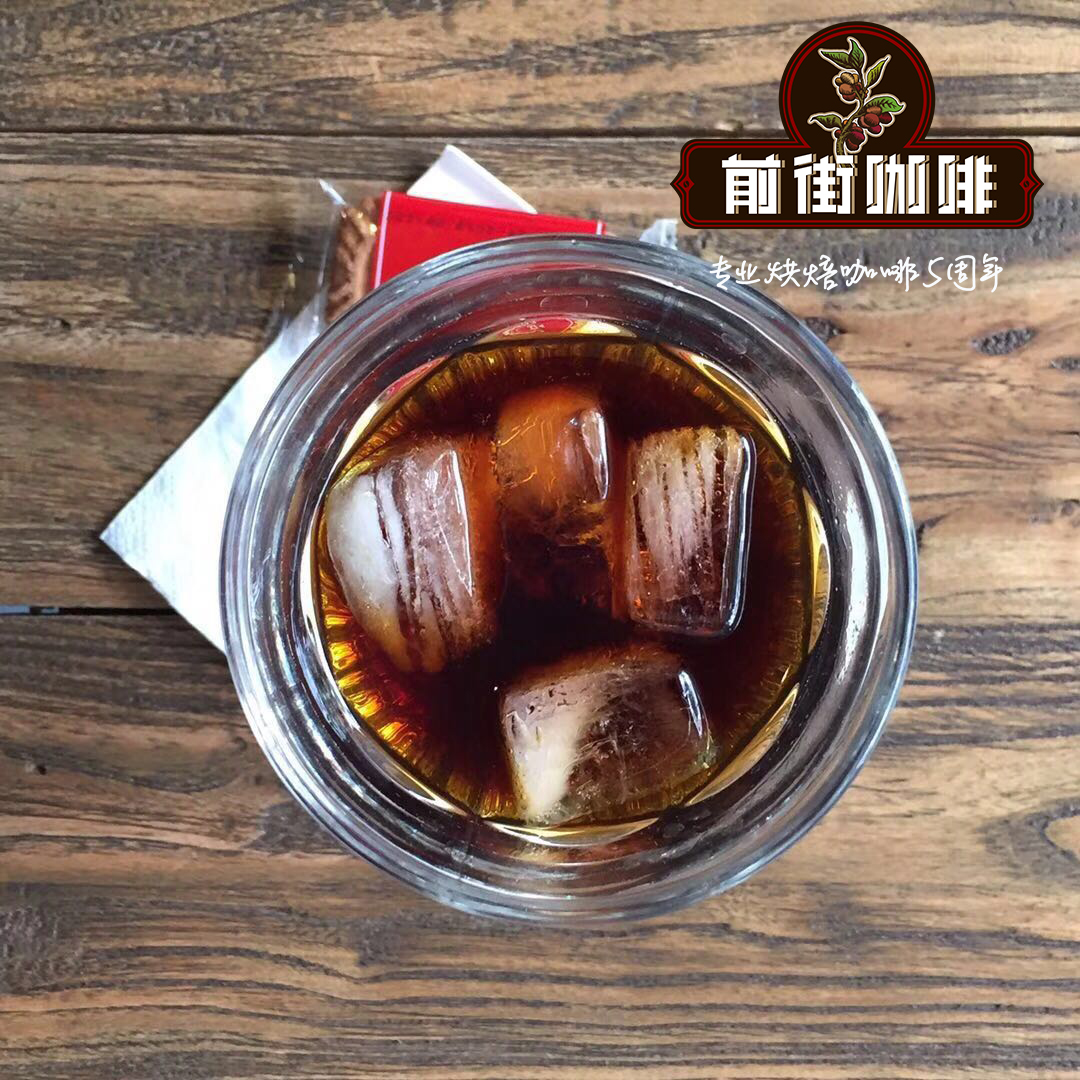
Professional coffee knowledge exchange more coffee bean information please follow the coffee workshop (Wechat official account cafe_style)
The world-famous "Blue Mountain Coffee" is loved by coffee fans for its mellow taste and the best proportion of sour, bitter, fragrant, mellow and sweet taste. Because Blue Mountain Coffee is rare and expensive, it is generally consumed only as a single product. The brewing way of siphon pot and hand brewing can best interpret the mellow taste and long aftertaste of Blue Mountain coffee.
Many of the "Blue Mountain Coffee" on the market are actually the so-called "Blue Mountain Coffee" or "Blue Mountain flavor" coffee. If you pay a little attention to it, you will find the label "Blended" or "Flavor". "Blue Mountain blend Coffee" is defined to contain no less than 30% of blue mountain beans. Many people use such blue mountain blend coffee beans to make coffee, such as latte, cappuccino, mocha and so on. If the roaster adheres to the concept of seven days of fresh roasting, absolutely good quality coffee beans, supplemented by fresh and proper roasting, each cup of coffee will give you a fragrant taste and a meaningful aftertaste.

What is the real Blue Mountain like? The Blue Mountains are located in the eastern part of the island of Jamaica, hence its name because it is surrounded by the Caribbean Sea. On clear days, the sun shines directly on the blue sea, and the peaks reflect the bright blue light of the sea. The highest peak of the Blue Mountains, which is 2256 meters above sea level, is the highest peak in the Caribbean and a famous tourist attraction. It is located in the coffee belt, with fertile volcanic soil, fresh air, no pollution, humid climate, foggy and rainy all the year round (average precipitation of 1980 mm, temperature of about 27 degrees). This climate and ultra-high altitude have created the world-famous Jamaican Blue Mountain Coffee.
Introduction to Clifton Farm
Clifton Hill is by far the oldest coffee producer in Jamaica, and only Clifton Farm in Jamaica has a "tropical rainforest" logo.
It is recognized as a very high quality and world-famous producing area of Blue Mountain Coffee. Its elegant large house farm is located on an island in the Newcastle area on the eastern slope of Mount Catherine at an elevation of 4300 feet.
History.
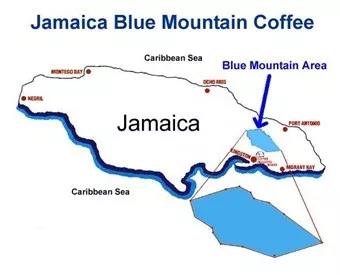
As early as the mid-18th century (around 1750), Clifton Farm began to grow and produce coffee.
According to a survey conducted by the Jamaica Institute in 1810, Robert Hamilton was the owner of the farm at that time. Clifton Hill is divided into two parts: 427 acres of 80 acres of coffee pastures at the top of the mountain, 111 acres of coffee and 264 acres of pastures at the foot of the mountain.
The Blue Mountain area is a small area with a planting area of only 6000 hectares, and it is impossible to grow all the coffee marked "Blue Mountain" there. Today's Clifton Farm is the largest estate in the area and is also a small-scale plantation by international standards, many of which are small landowners whose families have been working on the land for two centuries.
Ms. Marianne Ross, a famous British painter and writer, visited Jamaica and spent five months on Clifton Hill. In her autobiography memories of Happy Life, she mentions the Clifton Hotel where she stayed: "the Clifton Hotel belongs to a local gentleman who has lost his wife. Instead of staying in a hotel, he rents it to different people every week, so that more people can experience the cold air at an altitude of 5000 feet and have the opportunity to walk among the best and oldest coffee plantations in Jamaica. "
Clifton Hill Village
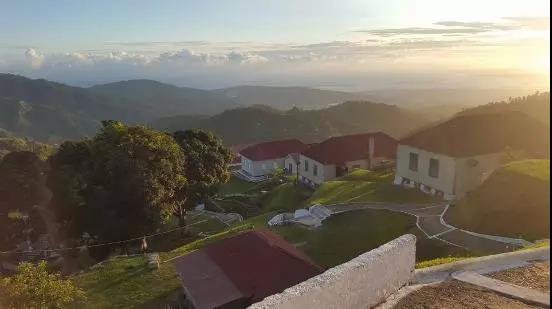
The coffee planting and processing area falls at an average of 4300 feet (1310.64 meters), with sufficient altitude, mild afternoon cloud shade, adequate sunshine and mineral-rich planting soil to provide good growth conditions for coffee plants. it also prolongs the ripening of coffee cherries.
In 1953, the Jamaican government established the Jamaican Curry Industry (CIB) to regulate and guarantee the quality of Jamaican coffee. Jamaica was the first country in the world to assign a clear geographical location to a specific coffee brand, similar to the French wine industry that founded AOC.
All coffee exported from Jamaica is sent by CIB. And rigorous tests by trained quality control experts ensure that all exports are 100% authentic Jamaican Blue Mountain coffee.
Sharp family The Sharp family, Jason, Lawrence (father), and Richard
As early as the mid-18th century (around 1750), Clifton Farm began to grow and produce coffee. According to a survey conducted by the Jamaica Institute in 1810, Robert Hamilton was the owner of the farm at that time and is now managed by the Sharp family.
Sharp is checking the red fruit now.
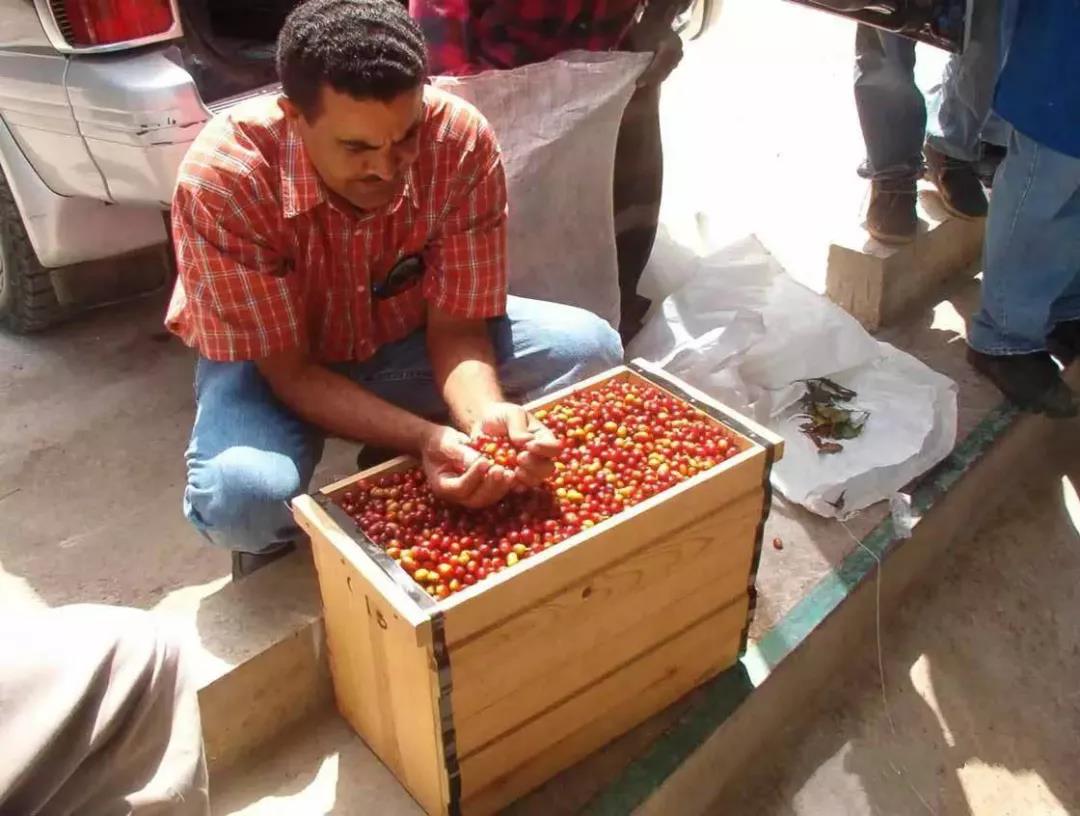
Clifton's high altitude and long history, and in the treatment method is also unique, this wonderful and unique treatment method makes Clifton not only has the unique round and supple taste of Blue Mountain 1, but also has a slight floral aroma and other rich taste.
So that's why Clifton is so popular and sells at a high price. The standard of more than ten thousand a barrel.
02 | washing method

Blue Mountain has only water washing treatment.
The peel, pulp and mucous membrane were removed by washing and fermentation. Farms that use the washing method must build washing ponds and be able to introduce an endless supply of running water. During the treatment, first remove the peel and pulp and let it ferment for 18 hours, then put the mellow beans into the pool and pass them back and forth, using the friction of the beans and the power of running water to wash the coffee beans until smooth and clean.
After washing, the coffee beans are still wrapped in the pericarp with a moisture content of 50%, and the moisture content must be dried to reduce the moisture content to 12-14%. After that, the coffee beans are screened and stored in a special warehouse. These procedures must be strictly mastered, otherwise, the quality of coffee will be affected.
Certification: tropical rain forest certification, the certification mark on the coffee sack or barrel is the certified product coffee, the farm must meet the Sustainable Agriculture system Standards before it can be certified. (rainforest water frog), Clifton Manor is the only coffee farm that has obtained (RFA) rainforest water frog certification.
03 | Analysis of raw beans
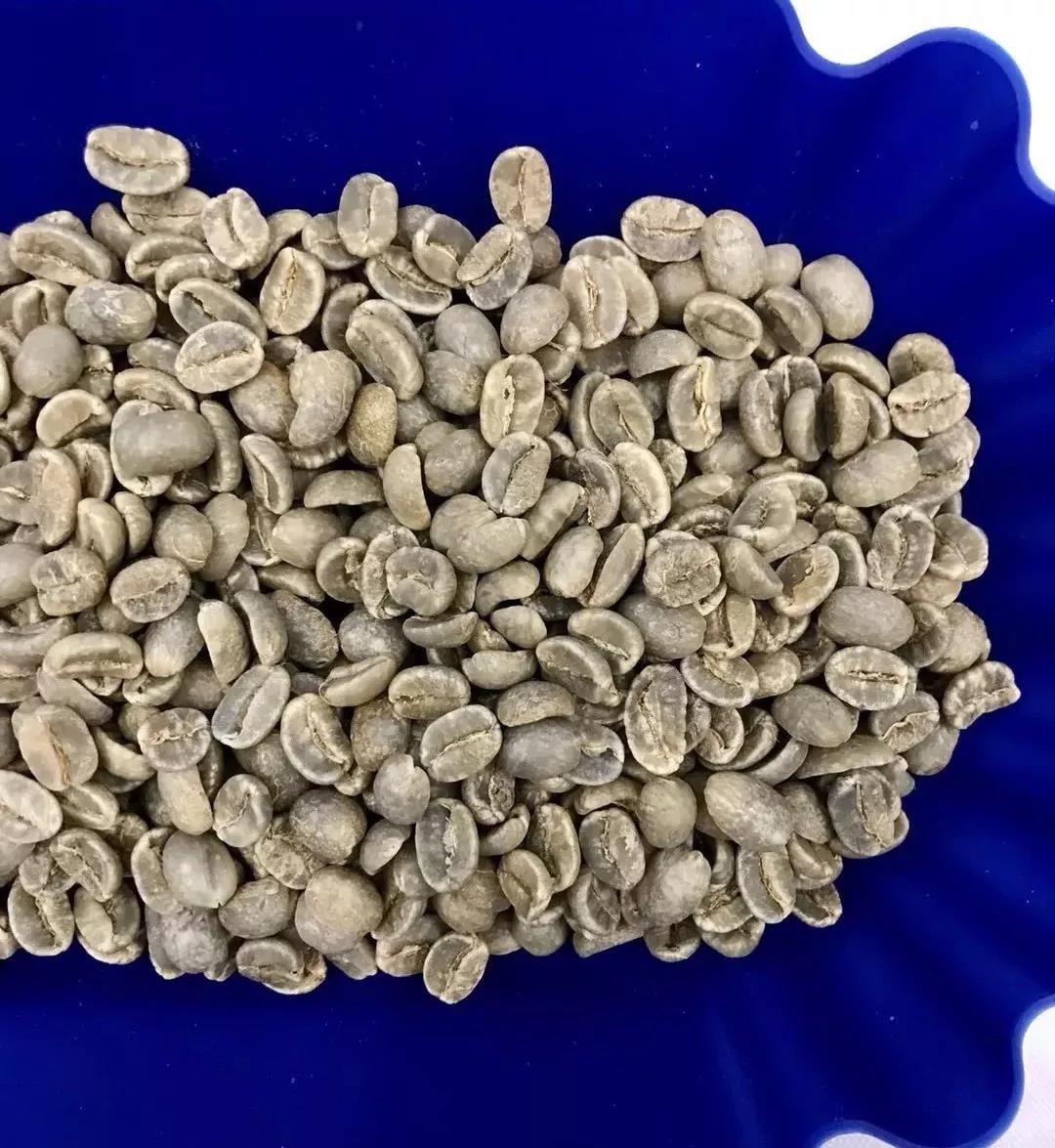
The Blue Mountains are divided into four levels each. From top to bottom in terms of quality, NO.1, NO.2, NO.3 and PB,PB are round beans. According to CIB standards, coffee grown above 666m above sea level is called Jamaican alpine coffee; coffee grown outside the Blue Mountains is called Jamaican coffee.
Among them, the basic standard of blue mountain raw beans of NO.1 is beans with more than 17 mesh, defect rate less than 3%, moisture content about 13%, and so on.
Variety: tin card species
Blue Mountain Coffee Cup Test:

Cup test features: a perfect and delicate balance of acidity, mellow thickness and aroma. Its acidity is bright and delicate. Its body is as smooth as velvet. Its aroma is slightly penetrating, accompanied by floral, spicy, and citric acid tones. There is a hint of cocoa after the entrance.
The taste is very clean, complex, very mild, chocolate sweet, very mellow. The taste is full-bodied and mellow. the sweet, sour and bitter taste of the coffee is perfect, with no bitterness at all, only a moderate and perfect sour taste and a long fruity taste.
Dry aroma: roasted peanuts (roasted peanut), hazelnuts (hazelnut), melons (melon), chocolate (chocolate-like)
Wet fragrance: oolong tea (rose-tea), caramel (caramel), honey (honey), chocolate (black- chocolate), almond skin (almond skins), silky taste (silky mouthfeel), bright feeling (brightness)
05 | Cooking analysis
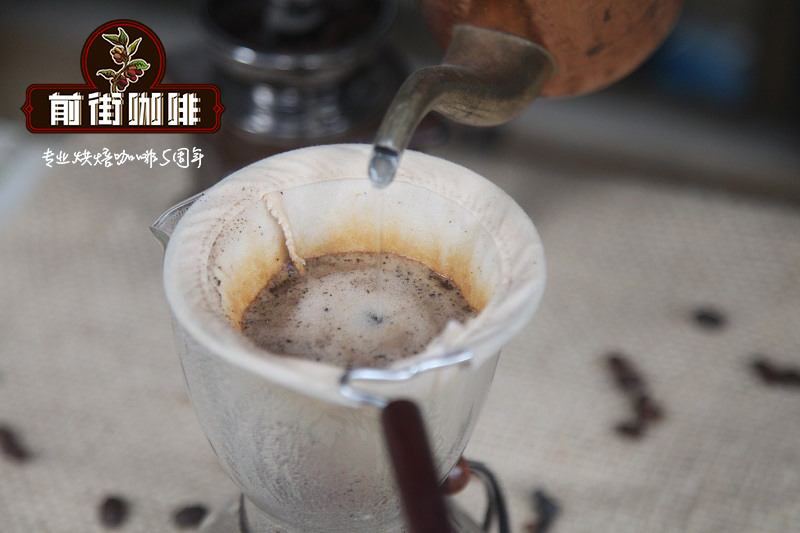
Daily cooking filter cup selection: V60 filter cup, kalita fan and KON0 can be used.
KONO parameters: 15g powder, water temperature 89 degrees, grinding 4, ratio of water to powder close to 1:15, total time about 2:00
Technique: 25-30g water steaming, the steaming time is 30s, the first stage water injection to 120g water cut off; vertical flow, small flow slowly circle; the second stage water injection to 225g, the flow and circle speed is slightly faster, reducing powder clogging filter cup, resulting in over-extraction.
Other extraction suggestions:
Normal pressure: 3.5-4 degree of grinding / water temperature 90 degrees
Siphon: 4 degree of grinding, water temperature: 89 degrees
Philharmonic pressure, 2.5 degree of grinding, water temperature 88 degrees
How to distinguish between true and false Blue Mountains?
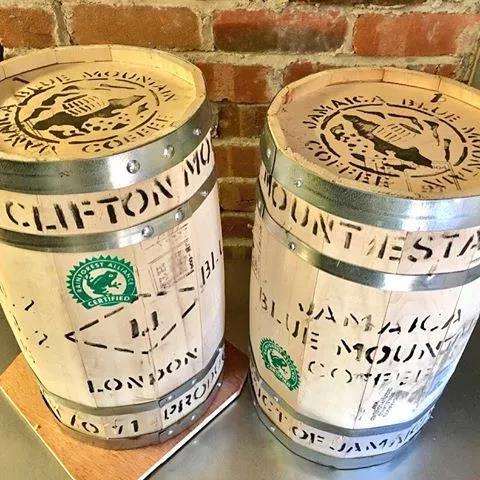
1, appearance: the raw beans of Blue Mountain Coffee are cyan, the appearance is very neat, the size is medium to small, the ends are warped up, the volume increases a lot after baking, very full.
2, grinding beans: the real blue mountain coffee beans grow at high altitude, its cytoplasmic structure is relatively loose, when grinding by hand, it feels very crisp, cool and continuous, and there is no feeling of resistance.
3, aroma: the aroma is very rich and dense; the so-called blended Blue Mountain Coffee does not have this aroma.
4, taste: the real Blue Mountain Coffee has a balanced and full-bodied taste, without any feeling of prominence or lack of taste, which is unmatched by any other coffee beans, the most critical identification point. The aroma of blue mountain peas is more subtle and the taste is relatively stronger.
The real Blue Mountain and Blue Mountain flavor are two different concepts, which are generally roasted with other beans to mimic the similar taste of Blue Mountain coffee. The beans of "Blue Mountain mixed Coffee" are mixed, have a big difference in shape, and are easier to identify. Also do not believe in dozens of yuan a pound of "the best Blue Mountain", more than ten yuan a cup of "Blue Mountain Coffee".
Not all the landmarks "Blue Mountains" are real blue mountains. I hope it can help you identify-
Qianjie coffee: Guangzhou bakery, the store is small but a variety of beans, you can find a variety of unknown beans, but also provide online store services. Https://shop104210103.taobao.com
Important Notice :
前街咖啡 FrontStreet Coffee has moved to new addredd:
FrontStreet Coffee Address: 315,Donghua East Road,GuangZhou
Tel:020 38364473
- Prev
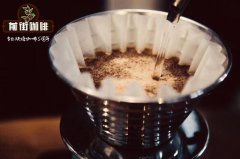
Do you drink blue mountain coffee or blue mountain coffee? Is the Blue Mountain flavor coffee good?
Professional coffee knowledge exchange more coffee bean information please follow the coffee workshop (Wechat official account cafe_style) have you ever had blue mountain coffee coffee? Think about it before you answer this question. For example, think about the price of that Blue Mountain coffee you drink. Is a kilo of raw beans (green beans) more than 600 yuan? If not,
- Next
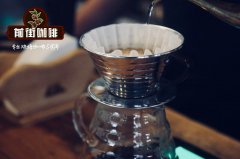
How to buy Blue Mountain Coffee _ Why is Blue Mountain Coffee so expensive? what is the flavor of Blue Mountain Coffee
Professional coffee knowledge exchange more coffee bean information please pay attention to the coffee workshop (Wechat official account cafe_style) Coffee beans are grown in so many places around the world, why is it so expensive to grow coffee beans in the Blue Mountains? There are two reasons for ●! Blue Mountain is located in the coffee belt, with fertile volcanic soil, fresh air, no pollution, humid climate, foggy and rainy all the year round.
Related
- Detailed explanation of Jadeite planting Land in Panamanian Jadeite Manor introduction to the grading system of Jadeite competitive bidding, Red bid, Green bid and Rose Summer
- Story of Coffee planting in Brenka region of Costa Rica Stonehenge Manor anaerobic heavy honey treatment of flavor mouth
- What's on the barrel of Blue Mountain Coffee beans?
- Can American coffee also pull flowers? How to use hot American style to pull out a good-looking pattern?
- Can you make a cold extract with coffee beans? What is the right proportion for cold-extracted coffee formula?
- Indonesian PWN Gold Mandrine Coffee Origin Features Flavor How to Chong? Mandolin coffee is American.
- A brief introduction to the flavor characteristics of Brazilian yellow bourbon coffee beans
- What is the effect of different water quality on the flavor of cold-extracted coffee? What kind of water is best for brewing coffee?
- Why do you think of Rose Summer whenever you mention Panamanian coffee?
- Introduction to the characteristics of authentic blue mountain coffee bean producing areas? What is the CIB Coffee Authority in Jamaica?

